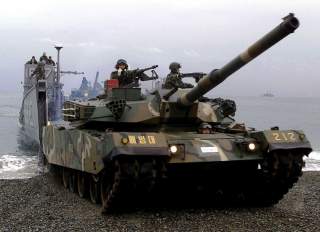Powerplay: The Origins of the American Alliance System in Asia
An excerpt from Victor D. Cha's new book.
The Obama administration openly supported independent Korean efforts at promoting an organization based on functional cooperation on nuclear safety, health, climate, and disaster relief in Northeast Asia called NAPCI (Northeast Asian Peace and Cooperation Initiative), and said that it complemented the US policy of “pivot” or “rebalance” to Asia. And at the October 2015 summit with South Korean leader Park Geun-hye, President Obama responded to a question about whether the United States had concerns with the ROK’s determined efforts to build bilateral cooperation with China. His response was a classic statement of the positive-sum nature of the issue:
[S]ometimes there’s a perception that if President Park meets with President Xi, that that must cause a problem for us. Well, President Xi was in this room, eating my food. (Laughter.) And we were toasting and having a lengthy conversation. We want South Korea to have a strong relationship with China, just as we want to have a strong relationship with China. . . . So there’s no contradiction between the Republic of Korea having good relations with us, being a central part of our alliance, and having a good relationship—good relations with China. . . . So, again, I think there we have a shared interest. And my hope is, is that as a consequence of the outreach that President Park has done, the outreach we do, the interactions that we have with Japan and resolving some of the historical challenges that exist there, that we can create in Northeast Asia the kind of cooperative, forward-looking relationship among all countries that will be good for our children and our grandchildren.
The Beauty of Complexity
Asia’s emerging architectural design, replete with US bilaterals and minilaterals, ASEAN-based organizations, and China-based initiatives, is a “patchwork”—it is made up of an amalgam of groupings, some of which take on a more formal institutional structure, but others don’t. Asia’s architecture fits with what Karen Alter and Sophie Meunier would define as a “complex international structure” where groups are nested, partially overlapping, and parallel to one another without any clear sense of hierarchy among them. The model for this sort of “regional community” is not civilizational, where a particular “Asia-ness” defines the group (e.g., Hatoyama’s East Asia Community concept or Mahathir’s EAEC), nor is it based on postwar Western Europe. Instead it is more akin to a business model—where coalitions form among entities with the most direct interests to solve a problem. These meetings are seldom based on ideology, nor are they designed as part of a linear path to formal integration. Instead, entities participate because they seek to secure private goods (i.e., either profits or avoidance of losses), but the aggregation of their atomistic efforts precipitate collective benefits for the region.
Some may argue that the geometry of regional groupings I describe for Asia is too complex a vision because it has no core, no metrics for coherence, and no single superstructure. The common view is that complexity is suboptimal for multilateral institutions because it decreases efficiency and lacks a preventive capacity. It makes it hard to locate responsibility and thereby reduces accountability. The “hyperactivity” of multiple groupings can also be inefficient where efforts are often duplicative of one another. When groupings are formed in an ad hoc and immediate fashion, this also means that the time horizons of these groups are likely to be short. Complexity of architecture, however, is an asset to Asia’s architecture given the underlying historical animosities, the diversity of regime types, and the shifting balance of power because it solves two problems: security dilemmas and collective action. The addressing of these two dilemmas, moreover, helps the region use its architecture as a tool for better managing relations between the great powers and reducing the potential for destabilizing competition.
Victor D. Cha holds the D. S. Song-Korea Foundation Chair in Government and is the director of Asian Studies at Georgetown University. He is also senior adviser at the Center for Strategic and International Studies. Powerplay was released September 7, 2016.
Image: A Republic of Korea Forces Type 88 K1 Main Battle Tank unloads from Landing Craft Utility 1627, along with U.S. soldiers from Okinawa, Japan. Wikimedia Commons/U.S. Air Force

